This post may contain affiliate links, which means that I may receive a commission if you make a purchase using these links.
Summer foraging is one of my favorite activities as the weather heats up. There is an abundance of berries, flowers and mushrooms during this time that can’t be found the rest of the year. Read on for some of the easiest edibles to identify in the summer!
This post is all about summer foraging.
My favorite time of the year is here: summer foraging! If you are thinking of getting into foraging, now is the time to do it!
Many of the easiest plants and mushrooms to identify are available during this time. (For example all the grocery store berries available in the summer: raspberries, blackberries, blueberries etc.!) Plus, you’re probably going to be spending more time outside anyway–might as well look for some free food!
Before we get started with some common wild edibles for beginners, I want to share my top summer foraging tips.
Note: I am foraging in the Northeast of the United States. While many of the plants can be found all over the world, some of them are specific to this region!
Summer Foraging Tips
- Wear insect repellant. The ticks and mosquitoes are out in full force in the summertime. It’s important to protect yourself, especially if you’re going to be wandering around in grassy areas. My favorite repellent is the REPEL Plant-Based Lemon Eucalyptus Insect Repellent.
- Wear sunscreen and sun protection. If you’re anything like me you could spend all day foraging! It’s easy to lose track of time and realize at the end of the day you’ve gotten a sun burn. That’s why I always recommend wearing a hat and reapplying sunscreen every few hours while you’re out foraging.
- Wash off you foraged finds. Going back to my first tip, the summertime tends to be very buggy. Don’t be surprised to bring home a few friends with your foraged plants. I like to submerge my foraged finds in a basin of water and then rinse off to remove all insects and dirt.
This post was all about summer foraging.
Summer Wild Edible Plants
Summer Foraging | Edible Berries
Cherry (Prunus spp.)
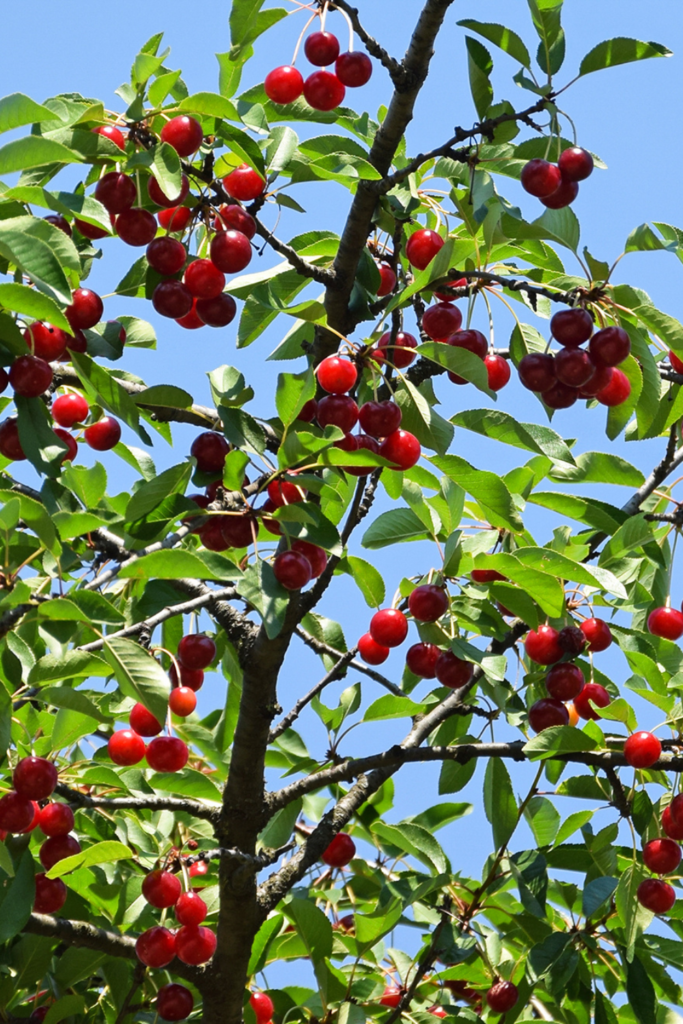
Cherry trees can be found nearly everywhere! They are often planted as ornamentals in cities and suburbia, but there are a few species that are native to the Northeast and grow wild (like black cherry Prunus serotina, pin cherry Prunus pensylvanica, and chokecherry Prunus virginiana.)
How to Find: Cherries have alternate oval, lightly serrated leaves. Flowers typically have five petals and are white to light pink. Cherries are stone fruit, meaning the fleshy berries surround a single seed (the botanical name for this is “drupe”).
How to Eat: Cherries make excellent jams, jellies, juices, and fruit leathers.
Raspberry (Rubus strigosus)
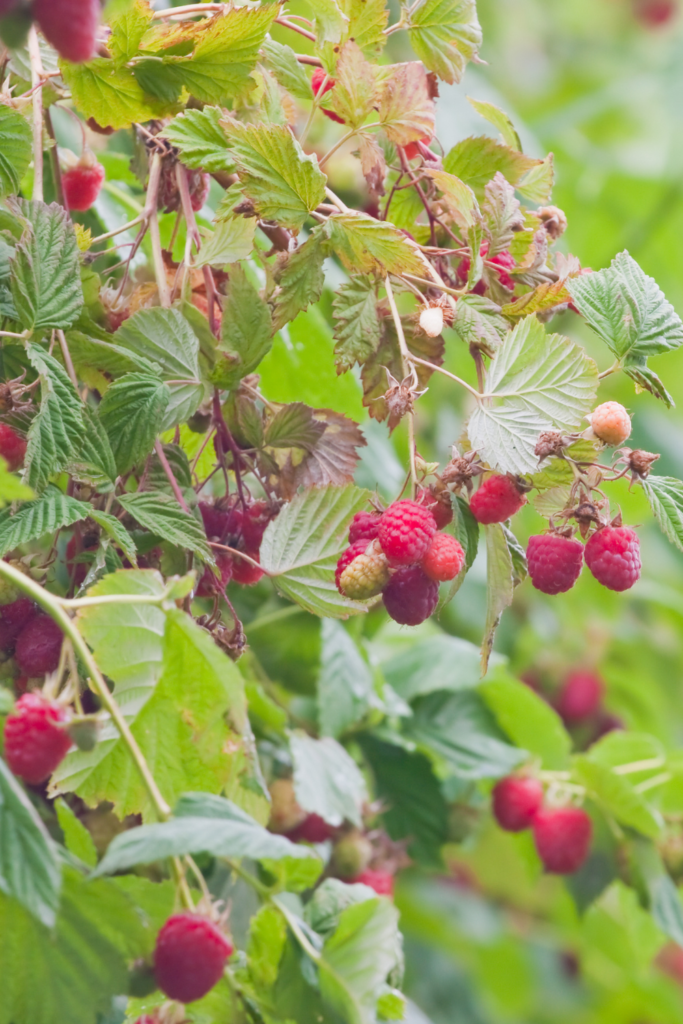

Did you know this grocery store favorite can also be found wild in much of North America? That is, if you can get to them before the birds do!
How to Find: Rubus species are often called “brambles,” thorny thickets found at the edge of woods and yards. Raspberries have a deep red/purple round stem (called a “cane”). Their large, pinnate leaves (which can be used medicinally in teas) grow in leaflets of three to five. Raspberries are aggregate berries, meaning they are actually a cluster of numerous drupelets around a central seed.
How to Eat: I probably don’t need to tell you how to eat raspberries. They are probably best raw, eaten as a trail snack or atop yogurt and desserts. Freeze raspberries that you aren’t going to eat within three days for smoothies, etc.
Blackberry (Rubus allegheniensis)
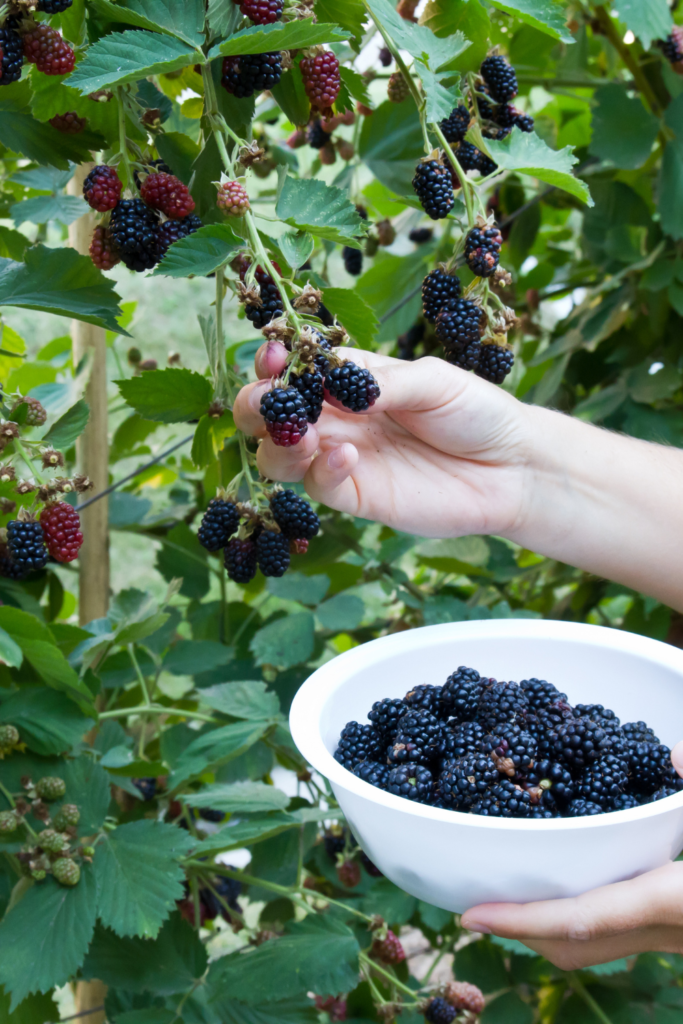

Blackberries are another supermarket favorite that can be found wild throughout North America, but the species likely to be found in the Northeast is Rubus allegheniensis.
How to Find: Blackberries look very similar to their raspberry cousins, but are distinct in a few key ways. Before berries appear in the summer, you can identify a blackberry cane because it will have one flat side (unlike the completely round raspberry canes.) Of course, the berry is a deep purple, but also when picking a blackberry the middle part of the berry (the “torus’) stays with the fruit. The torus stays on the plant when picking raspberries, and thus raspberries are hollow.
How to Eat: Blackberries are also best raw, eaten by the handful. I also particularly enjoy them in pies, like this Oregon blackberry pie.
Juneberry/Serviceberry/Saskatoon (Amalanchier spp.)
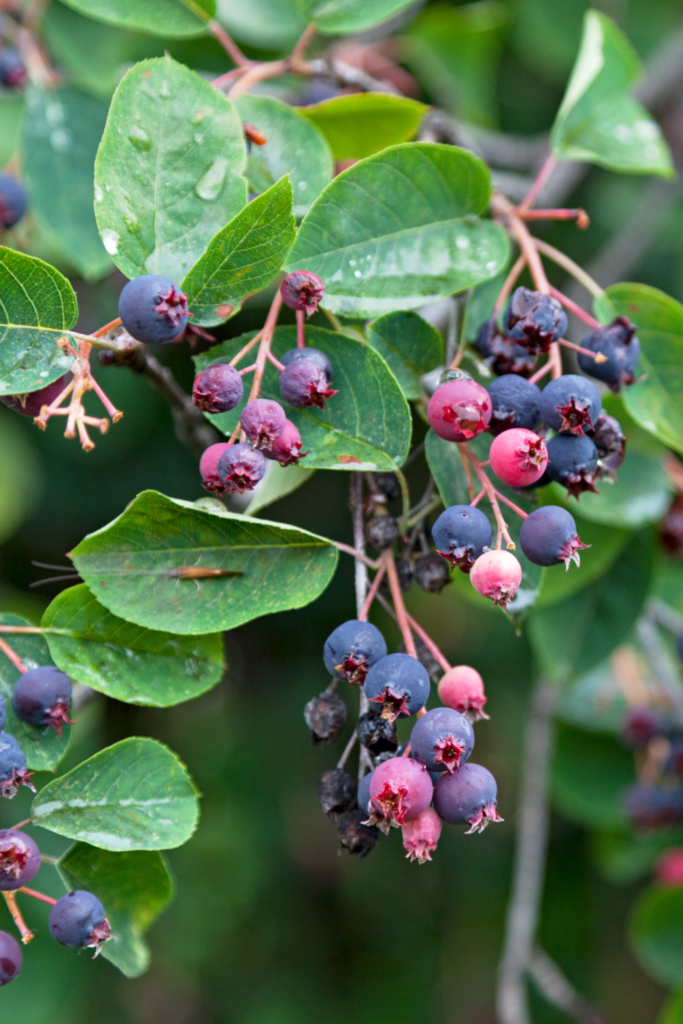

Juneberry is a fruit that goes by many names, but very few people have heard of these delicious berries! Severely underrated, juneberries look and taste a bit similar to blueberries, with a hint of almond. I find that “juneberry” is a bit of a misnomer, with fruit ripening closer to July-August where I live.
How to Find: Amalanchier species are shrubs or small trees that can be found across North America in sunny and well-drained areas, like at the edge of the woods or even along roadsides. Flowers have long, slender white petals that do not overlap. Berries are reddish-purple, about half an inch, and can range in shape from long and oval to round. Each berry contains several seeds that can be chewed and eaten (they have an almond-y flavor!)
How to Eat: Serviceberries are best fresh off the tree, but are also fantastic dried and enjoyed throughout the year!
Blueberry (Vaccinium corymbosum, Vaccinium angustifolium)
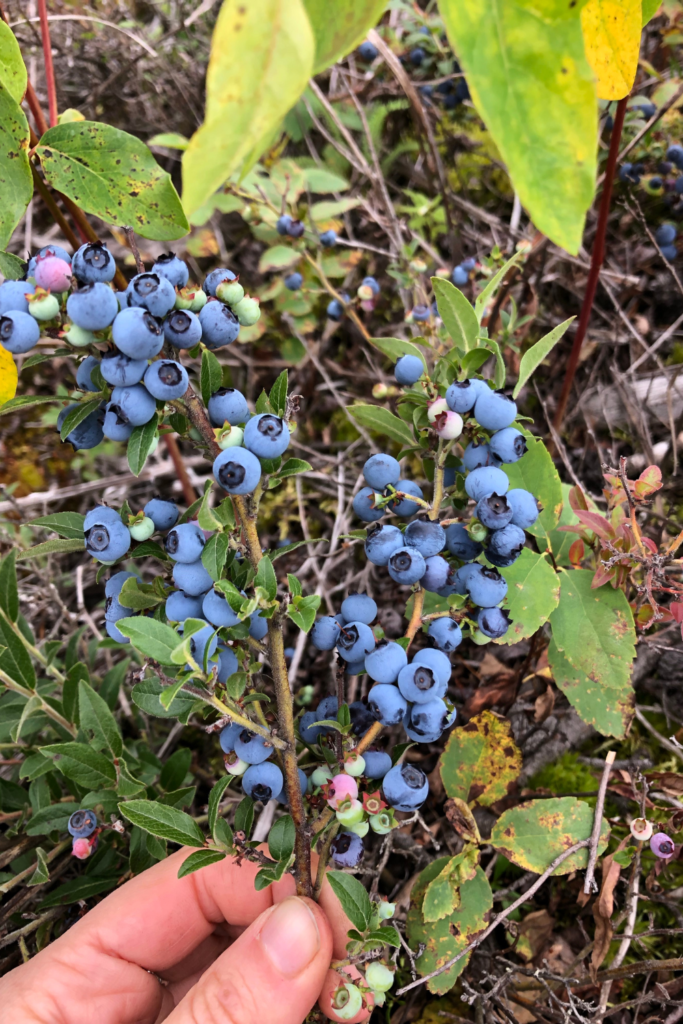

Blueberries are another summer berry grown commercially, but can be found growing wild in their native Eastern U.S. and Canada habitat.
How to Find: “Highbush” blueberries are the taller version that are grown commercially, but they can be found around swamps or lakes. Highbush blueberries have much bigger berries than their “lowbush” counterparts, which are lying shrubs more likely to be found on a rocky hike.
How to Eat: Eat them by the handful on your next hike, or enjoy them as a jam, jelly, or in a pie!
Kousa Dogwood (Cornus kousa)
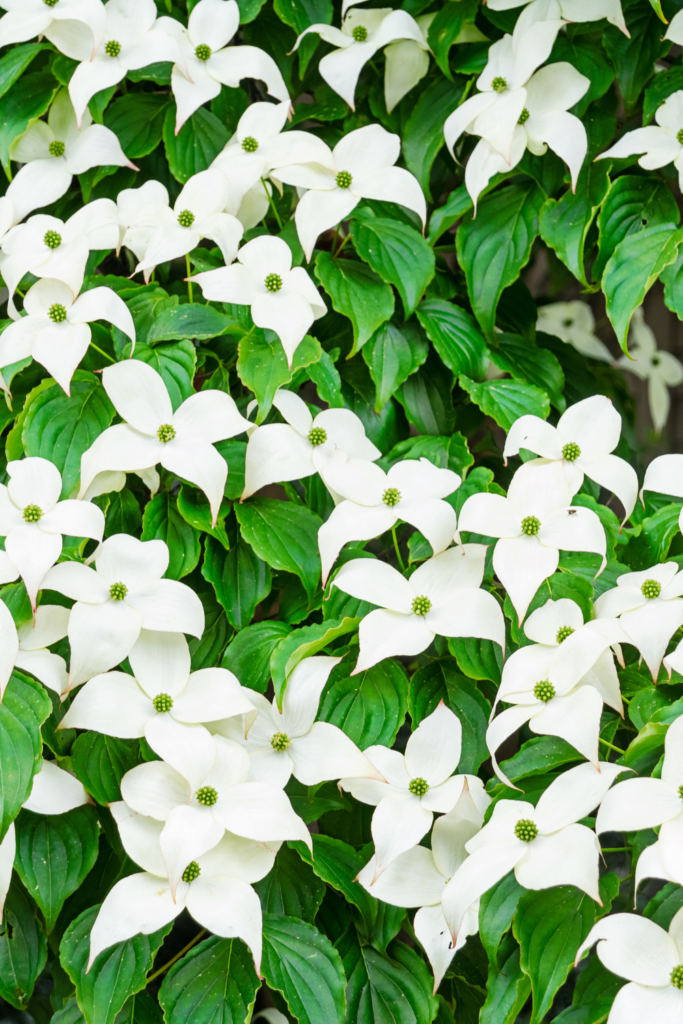

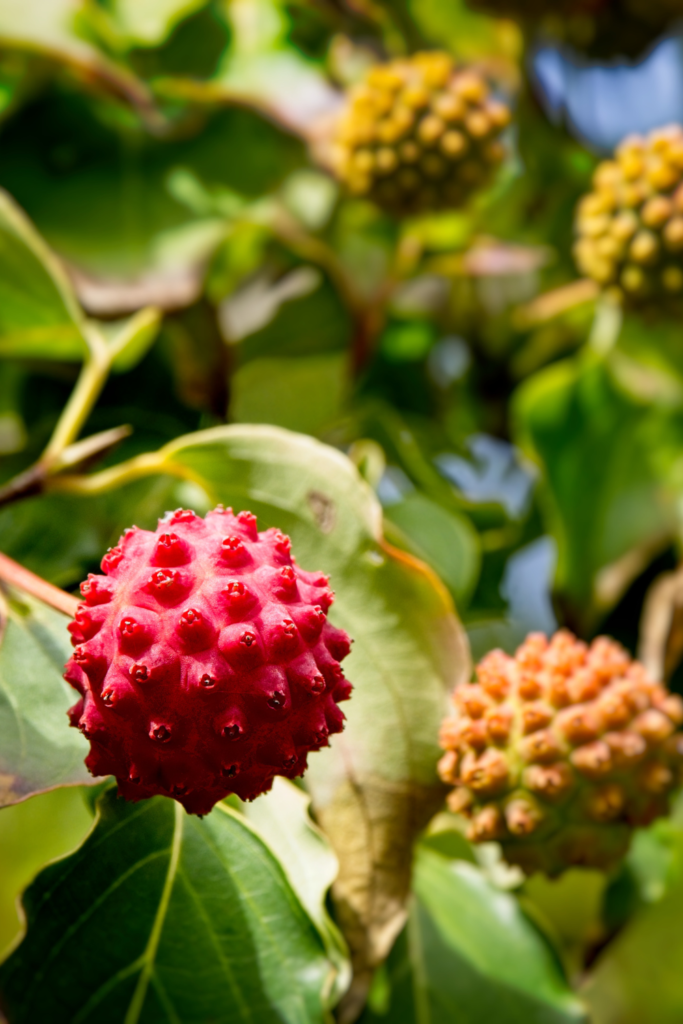

Kousa dogwood is a common ornamental tree native to Eastern Asia found in front yards and public parks. It’s probably most recognizable for its funky fruit that most people do not realize are edible!
How to Find: The kousa dogwood is pretty conspicuous in spring when it blooms, putting out big flowers that appear to have four white petals which are actually leaves. The edible berries appear in the summer, and can be identified by their bright magenta color and distinct bumpy, alligator-like skin.
How to Eat: Kousa dogwood berries can be enjoyed eaten out-of-hand, or used to make a delicious wine.
Summer Foraging | Edible Mushrooms
Chicken-of-the-Woods (Laetiporus sulphureus)
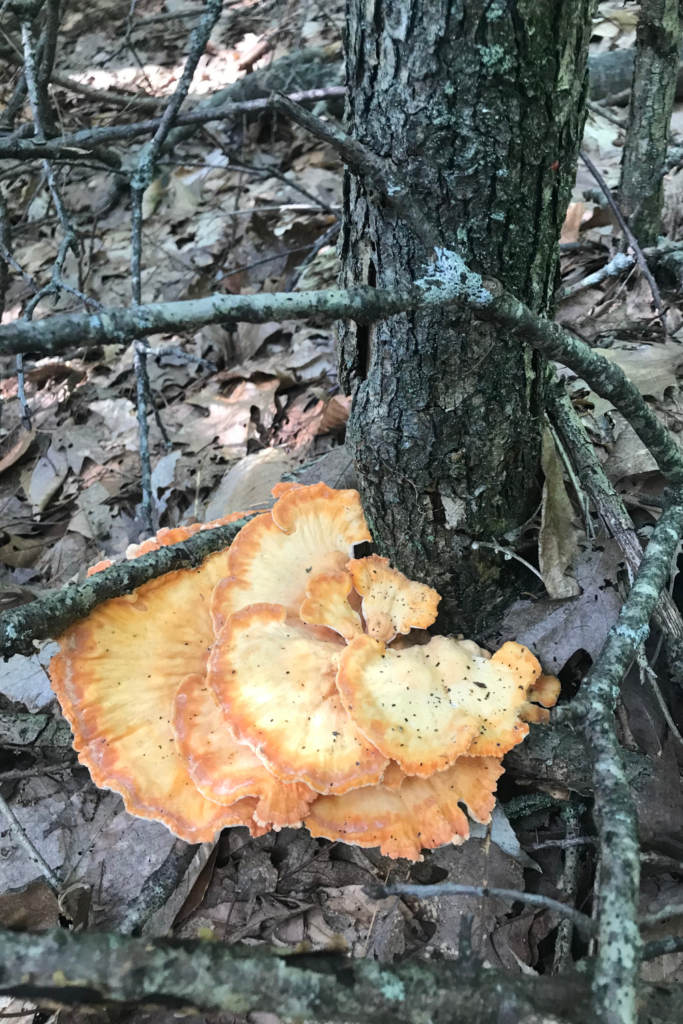

Chicken-of-the-woods, AKA chicken mushroom, gets its name from its chicken-like flavor after cooking. That’s right–it tastes like chicken! Plus, it’s an easy beginner mushroom that can be harvested abundantly throughout the summer.
How to Find: Chicken-of-the-woods is also called “sulphur shelf” for its almost neon yellow-orange coloration and flat shelf-like structure. Chicken mushroom is a saprophyte, meaning it grows on dead and drying trees. Check the underside of the mushroom before harvesting–there should not be any gills.
How to Eat: Make sure to cook chicken-of-the-woods thoroughly, as it is possible to have an adverse reaction. Cook them in butter or your favorite oil. You can even batter and deep fry them like fried chicken!
Chanterelles (Cantharellus spp.)
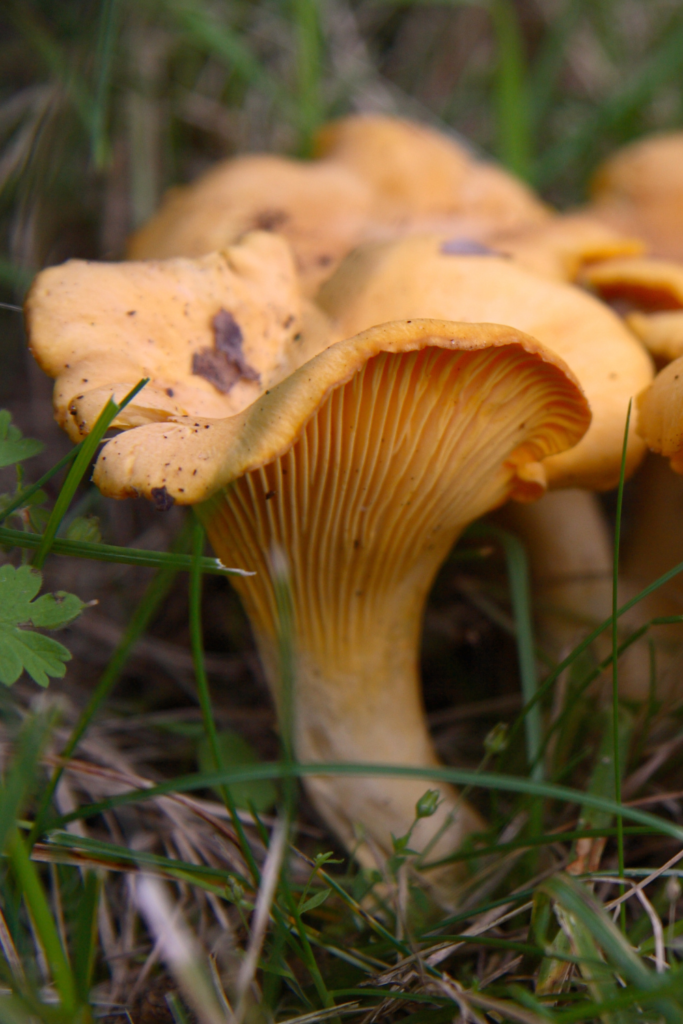

Chanterelle mushrooms are a chef and foodie favorite due to their beauty, versatility, and delicate flavor.
How to Find: Chanterelles can be found all over the world! They are orange, yellow or white and trumpet or funnel-shaped. Most species have folds on the undersides that run from the cap to the stem. Chanterelles grow on the ground often in coniferous forests. Do not confuse them for their poisonous look-alike that grows on trees (sometimes buried wood) and glows in the dark, the aptly named Jack-o-Lantern mushroom.
How to Eat: Simply cook chanterelles in butter to experience them in their simplest form! They are traditionally served atop meat entrees.
Common Summer Wild Edibles
Black Locust (Robinia pseudoacacia)
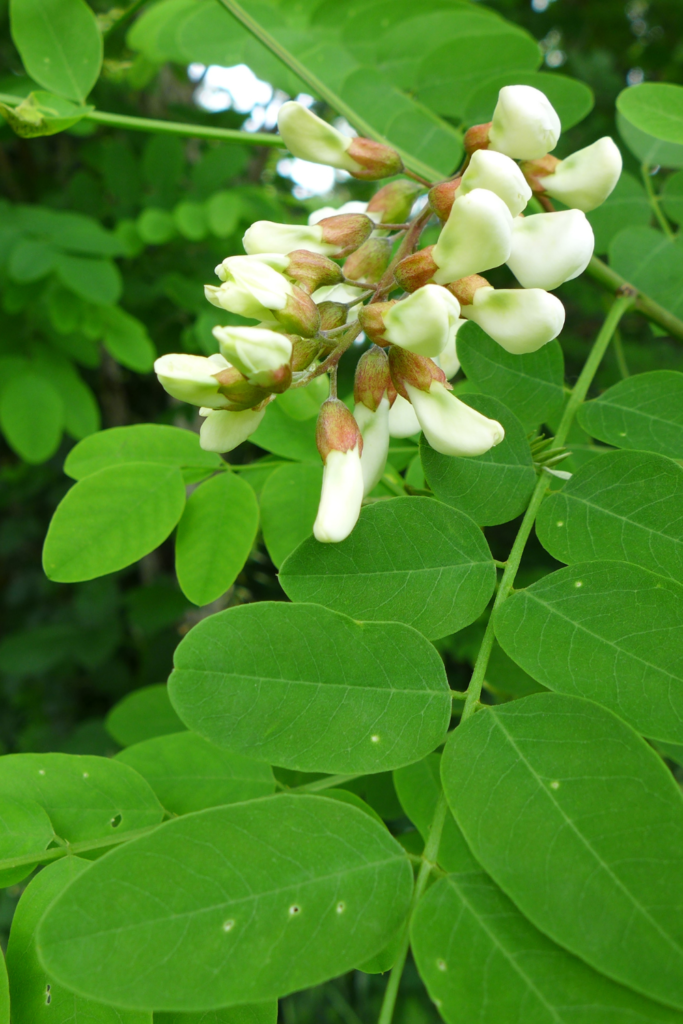

The black locust tree is actually a relative of the common pea, which is evident in the subtle pea-like flavor of the edible flowers. What makes the flowers stand out though, are their intoxicating aroma.
How to Find: Black locust trees bloom in late spring/early summer. The white to cream flowers emerge in cascading racemes about four to eight inches long. The bark is gray and tinged with reddish orange, with deep grooves that often form a diamond pattern. The black locust tree is most easily identified by its leaves, which are compound with paired leaflets running down the stem.
How to Eat: The vanilla-y fragrance of black locust flowers lends them well to desserts. They can also be cooked an eaten as a vegetable as in this black locust salad. Please note, the only edible parts of the black locust tree are the flowers.
Pineappleweed or Wild Chamomile (Matricaria discoidea)
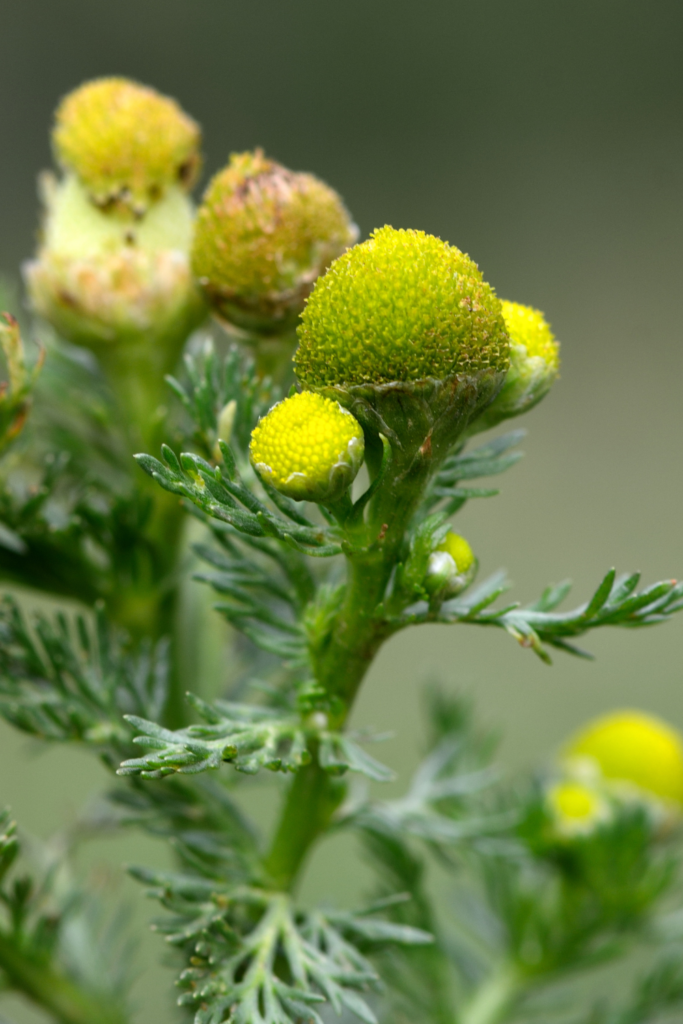

Pineappleweed is a staple of summer foraging. Also known as wild chamomile, pineappleweed is actually neither pineapple nor chamomile but certainly tastes like a blend of the two. Matricaria discoidea is actually a member of the daisy family.
How to Find: Pineappleweed is a low-lying weed that is commonly found in disturbed soils: in parks, along footpaths, etc. It flowers from May to September, so it’s a good failsafe if you are out foraging and otherwise strike out! The flowerheads are made of densely packed yellow-green corollas (little petals and reproductive organs) that conveniently look like mini pineapples! Crush a flower in between your fingers to release it’s pineapple-y scent.
How to Eat: The refreshing flavor of pineappleweed can be enjoyed fresh atop salads and desserts. Alternatively, many people enjoy pineappleweed steeped in a tea.
Elder (Sambucus spp.)
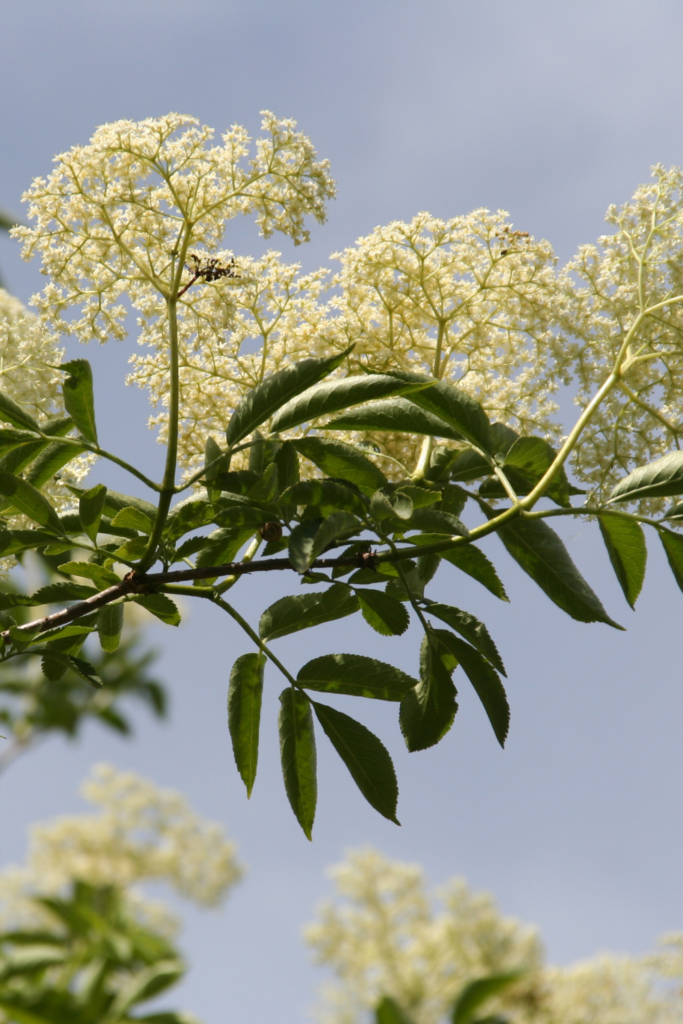



Elder (sometimes called elderflower or elderberry) are a common shrub or small tree found widely across the world. Most species (including the two found in North America, Sambucus canadensis and Sambucus nigra) have edible flower and berries, although the berries are only edible once cooked.
How to Find: Elder are common along roadsides and disturbed, sunny areas. The leaves are arranged in opposite pairs, pinnate with five to nine leaflets. In June, the shrub bears umbels of small, cream or white flowers that smell delicious and are edible. The flowers give way to dark purple to black berries in the late summer/early fall.
How to Eat: My favorite way to eat elderflowers is to make a simple syrup and make cocktails or mocktails. I so enjoy the fragrance of elderflowers I often use an umbel as a garnish in a drink. Later in the season, I used elderberries to make elderberry syrup.
Staghorn Sumac (Rhus typhina)


Staghorn sumac is the species common in the eastern U.S., but sumac (Rhus spp.) is found all over the world. Sumac is a popular spice in Middle Eastern countries, and is an ingredient in the spice blend za’atar.
How to Find: Sumacs are an abundant shrub in the eastern U.S. They are perhaps most easily identified in the summer when their hairy red fruits ripen in dense clusters.
How to Eat: Sumac fruit has a tangy taste thanks to its high malic acid content. Sumac fruit can be dried and used as a lemony spice. Many also like to make “sumac lemonade” by steeping the fruit in cold water, straining, and sweetening.
St. John’s Wort (Hypericum perforatum)
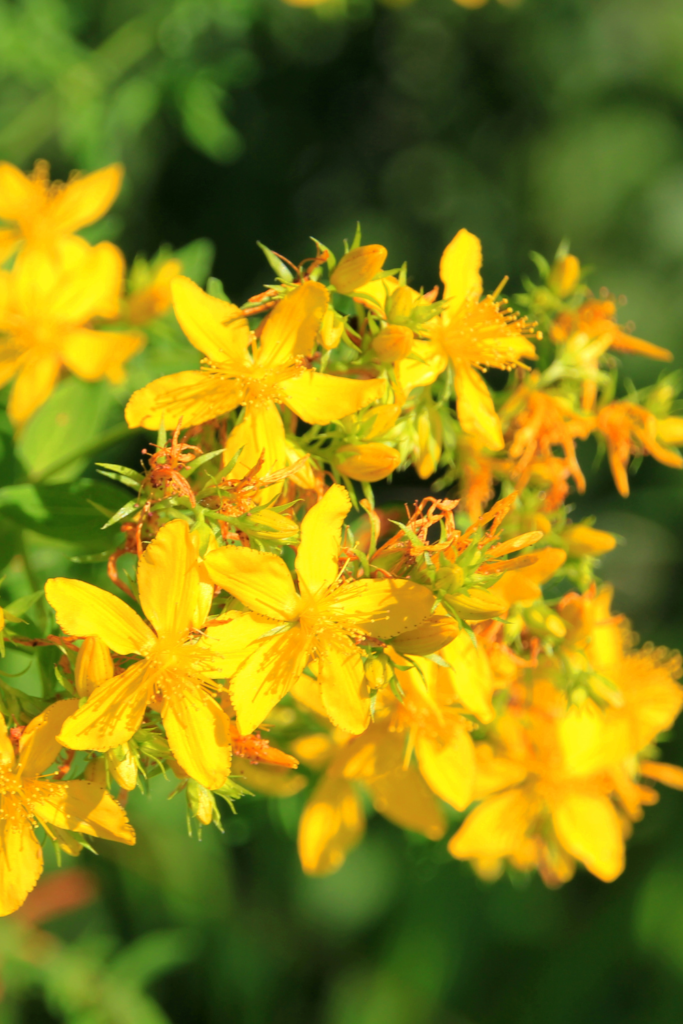

St. John’s Wort is a flowering herb that has been used in traditional herbal medicine practices for centuries.
How to Find: It seems like the sunny yellow flowers of St. John’s Wort are nearly ubiquitous. St. John’s Wort can be found in meadows and in urban and suburban areas with disturbed soil. Look for a bright yellow flower with black dots along the edges of the petals, and five leaf-like sepals below.
How to Eat: St. John’s Wort is typically dried and prepared as an herbal tea. However, check with your doctor before use, and St. John’s Wort has properties that can interact with certain medications.
Mullein (Verbascum thapsus)
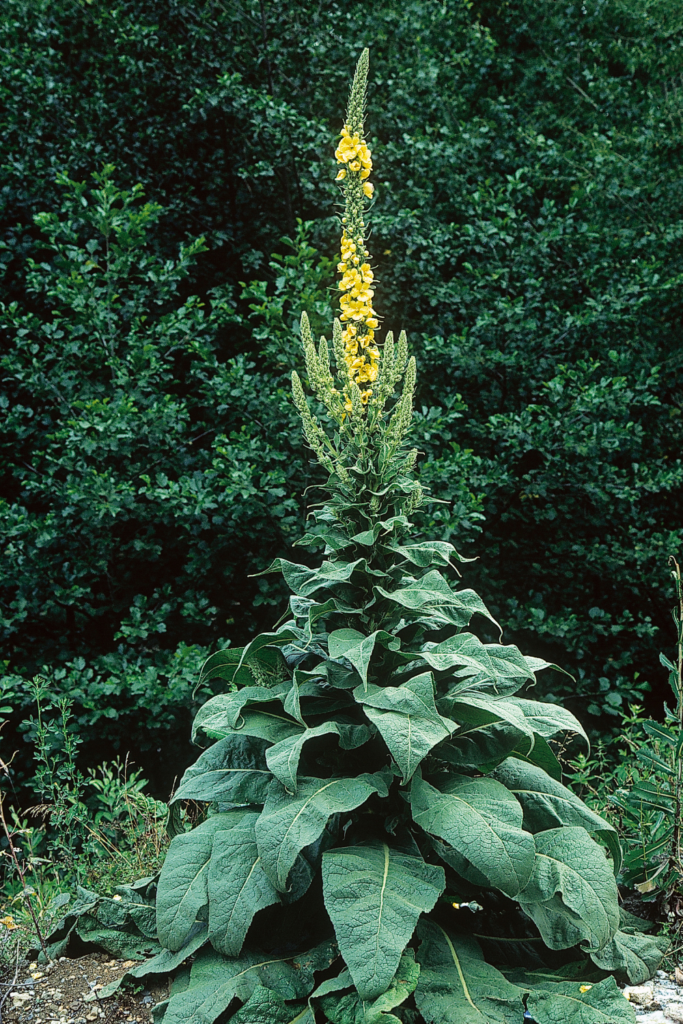

Mullein is another summer edible that has been used in traditional medicine for millennia. It can be found across the world, including the U.S., where it has been cheekily nicknamed “cowboy toilet paper” for its soft, wide leaves.
How to Find: Mullein is pretty distinct for a few reasons. The first year plant lies close to the ground, with its characteristic silvery-fuzzy leaves growing in a rosette pattern. Second year plants send up a tall (sometimes over 6 feet!) stalk that will bloom into a cluster of yellow flowers.
How to Eat: Mullein is typically dried and enjoyed as an herbal tea.
Beach Rose (Rosa rugosa)
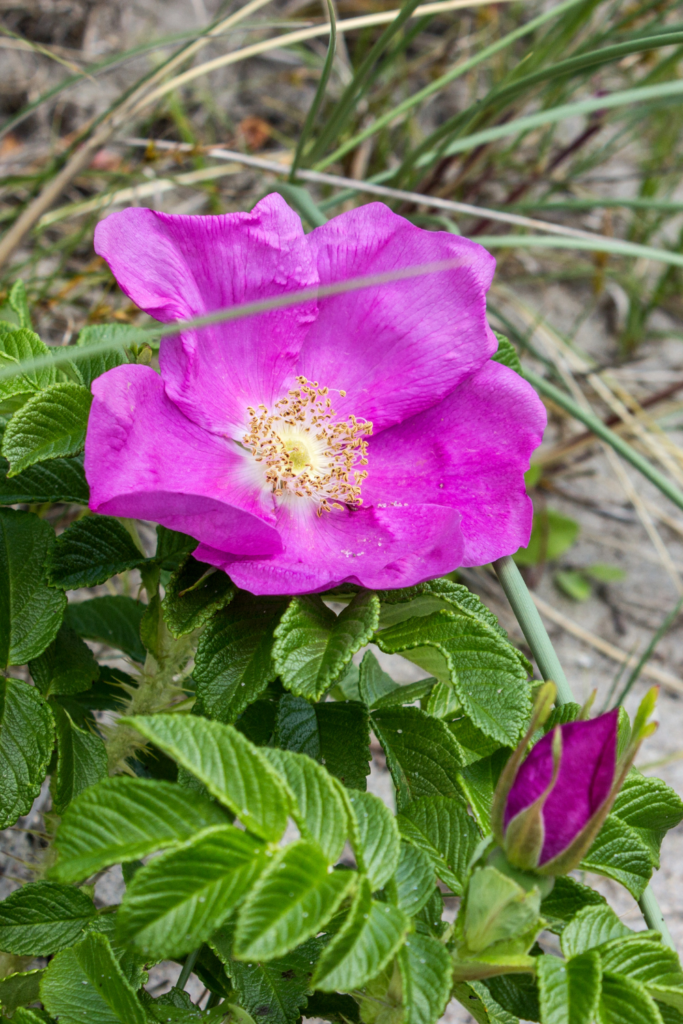

Beach rose is one of my favorite summer edible plants because it can be found at my favorite place–the beach!
How to Find: Beach rose is actually native to Asia, but was planted ornamentally in the U.S. and has since become invasive. You can find beach rose on beach coasts and sand dunes. Flowers are dark pink to white with five petals. Take a whiff–beach rose smells absolutely divine!
How to Eat: Petals can be collected and made into a fragrant tea, simple syrup, ice cream, or jelly. You can also use the rosehips (AKA the fleshy orange part of the rose flower just below the petals that contains the rose plant seed) to make a jam!
Foraging Resources
This is my favorite field guide to finding edible plants in the Northeast and Central U.S.


This book is one of my favorites to recommend to beginners, as it covers the common edibles you can find in your own backyard. You don’t have to go far to find edible plants!
Note: Please use caution when foraging plants for consumption. Do not eat plants you are not comfortable with identifying. See my plant identification resource recommendations below.

